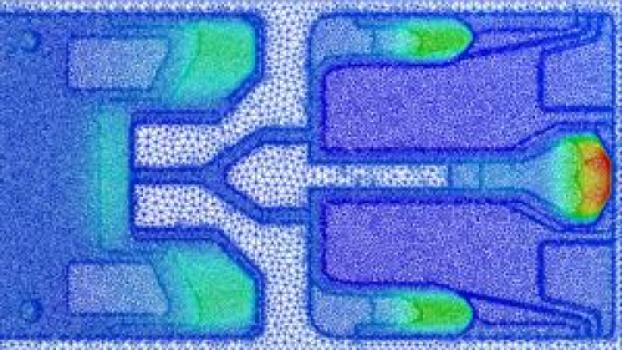
Operating a hard disk drive is as complex as keeping a superfast car on the road. Read/write heads within the hard disk must process a huge amount of data at high speed. Controlling the motion of the slider housing these heads is crucial: if the slider crashes, it could destroy the hard disk.
 Researchers at the A*STAR Data Storage Institute (DSI) in Singapore have now developed a computational algorithm for studying the properties of the slider in a hard drive that is faster than existing algorithms1. Instead of taking days to finish, dynamic simulations using the new algorithm take only an hour, notes Wei Hua from the research team. "It greatly improves our simulation and research abilities," he adds.
Researchers at the A*STAR Data Storage Institute (DSI) in Singapore have now developed a computational algorithm for studying the properties of the slider in a hard drive that is faster than existing algorithms1. Instead of taking days to finish, dynamic simulations using the new algorithm take only an hour, notes Wei Hua from the research team. "It greatly improves our simulation and research abilities," he adds.
A read head typically moves across the disk surface of a hard drive at more than 7,000 revolutions per minute. The flying height of this fast-moving head is as low as 2 nanometers from the surface of the disk, some 50,000 times less than the width of a human hair. Controlling this motion is not easy, notes Hua. "The slider housing the read/write head flies on the fast-rotating hard drive disk, owing to a very thin layer of air. This air bearing pushes the slider upward, while a suspension bearing pushes the slider down toward the disk."
Thermal effects control the distance of the head to the surface when it is being pushed down. To understand these effects, and other factors that control disk and head movements at high speed, fine-grained computer simulations are necessary.
Hua and co-workers expanded the DSI's ABSolution air bearing simulation software for faster and more precise modeling. Instead of dividing the hard drive slider into a structured rectangular mesh typically used to aid calculations, the researchers used an unstructured triangular mesh that accurately captures the geometry of the read/write head (see image). Moreover, the algorithm better implements the dynamic effects that occur in drive heads, meaning that overall the code works faster and more efficiently.

 Previous page
Previous page Back to top
Back to top







